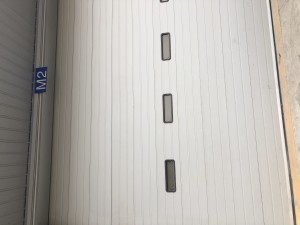Sliding doors are popular for their unique ability to save space and add elegance to any living or work area. However, if you have ever admired these multifunctional doors, you may have wondered about their various components and their specific names. In this blog we will focus on one specific aspect of sliding doors – the base and its terminology. Join us to uncover the fundamental elements hidden beneath these modern architectural marvels.
Learn the basics of sliding doors:
Sliding doors are a practical alternative to traditional hinged doors commonly found in residential and commercial settings. To ensure smooth operation along the track, sliding doors consist of several important components. These include upper rails, lower rails, jambs, panels, handles and of course the bottom section – also known as bottom rails or sill rails.
Revealing the bottom terms:
Bottom track:
Bottom rails, as the name suggests, are the horizontal rails or grooves that the sliding door panel rests on when it is in the closed position. Located at the base of the door, it provides stability and facilitates easy movement along the intended path. Bottom tracks are made from durable materials like aluminum or stainless steel and are designed to withstand constant foot traffic and the weight of the door.
Wheel or roller:
To allow for smooth sliding movement, sliding doors are equipped with a set of wheels or rollers at the bottom of the door panel. These wheels run within the base track, allowing the door to open or close easily. Typically made of nylon or stainless steel, these rollers are designed to withstand heavy use and provide seamless movement.
Guidance channels:
To maintain proper alignment, sliding doors often include guide channels within the bottom track. These guide channels ensure that the door remains centered in the channel and prevent the door from wobbling or derailing from the track. The guide channels must be cleaned regularly and cleared of any debris to ensure the door slides easily.
critical point:
While the sill is not technically part of the sliding door, it’s worth mentioning that it’s usually located at the bottom of an exterior sliding door. Door sills, also called saddles or sills, act as a barrier between interior and exterior spaces, preventing the entry of dust, water, and debris. Thresholds can consist of raised or flush profiles, depending on the specific requirements and weatherproofing needs of the building.
Innovations in sliding door systems:
As technology has advanced, a revolution has also taken place in sliding door systems. Modern designs now feature hidden bottom rails, eliminating the need for visible rails. These systems enable seamless integration between indoor and outdoor spaces while maintaining aesthetic appeal.
Understanding the mechanics behind sliding doors not only enhances our understanding of this architectural marvel, but also helps us make informed decisions when installing or maintaining these systems. Today, we’re focusing on the bottom section and its importance in ensuring these doors slide smoothly. Understanding components such as bottom rails, wheels or rollers, boot channels, and sills provides a deeper understanding of the craftsmanship and engineering behind these functional elements. The next time you admire a sliding door, take a moment to appreciate the precision and innovation involved in creating a seamless and effortless transition between spaces.
Post time: Sep-15-2023

